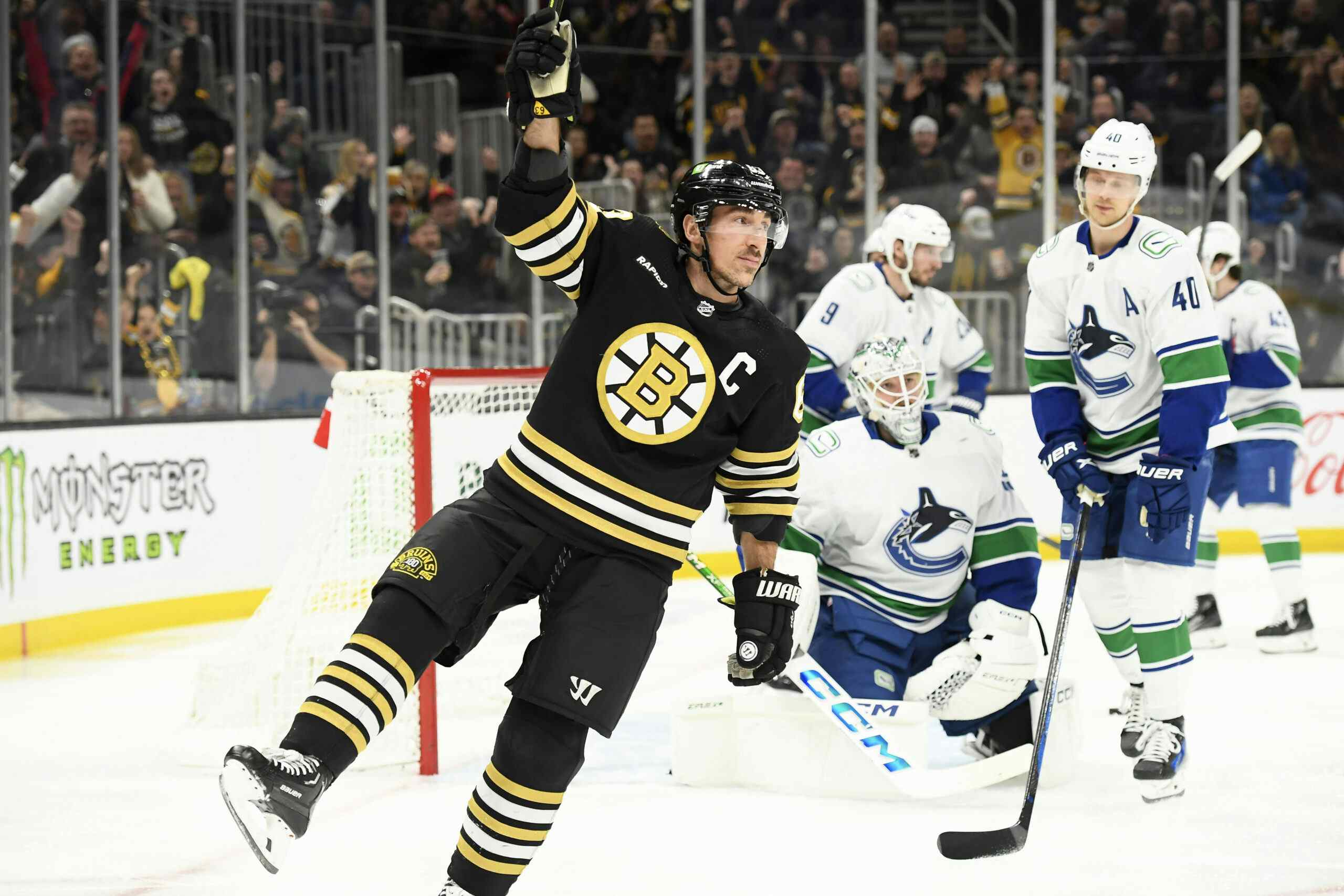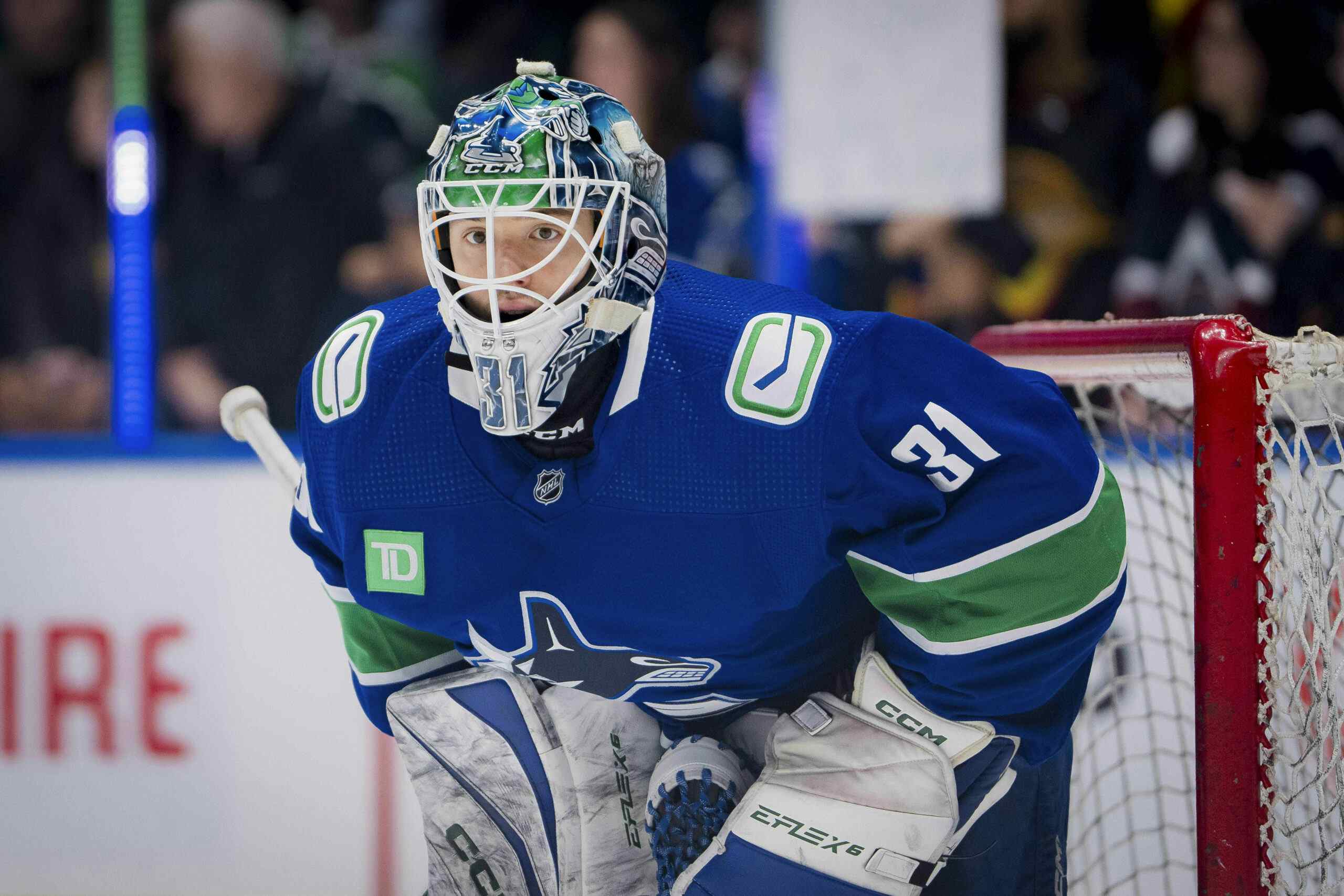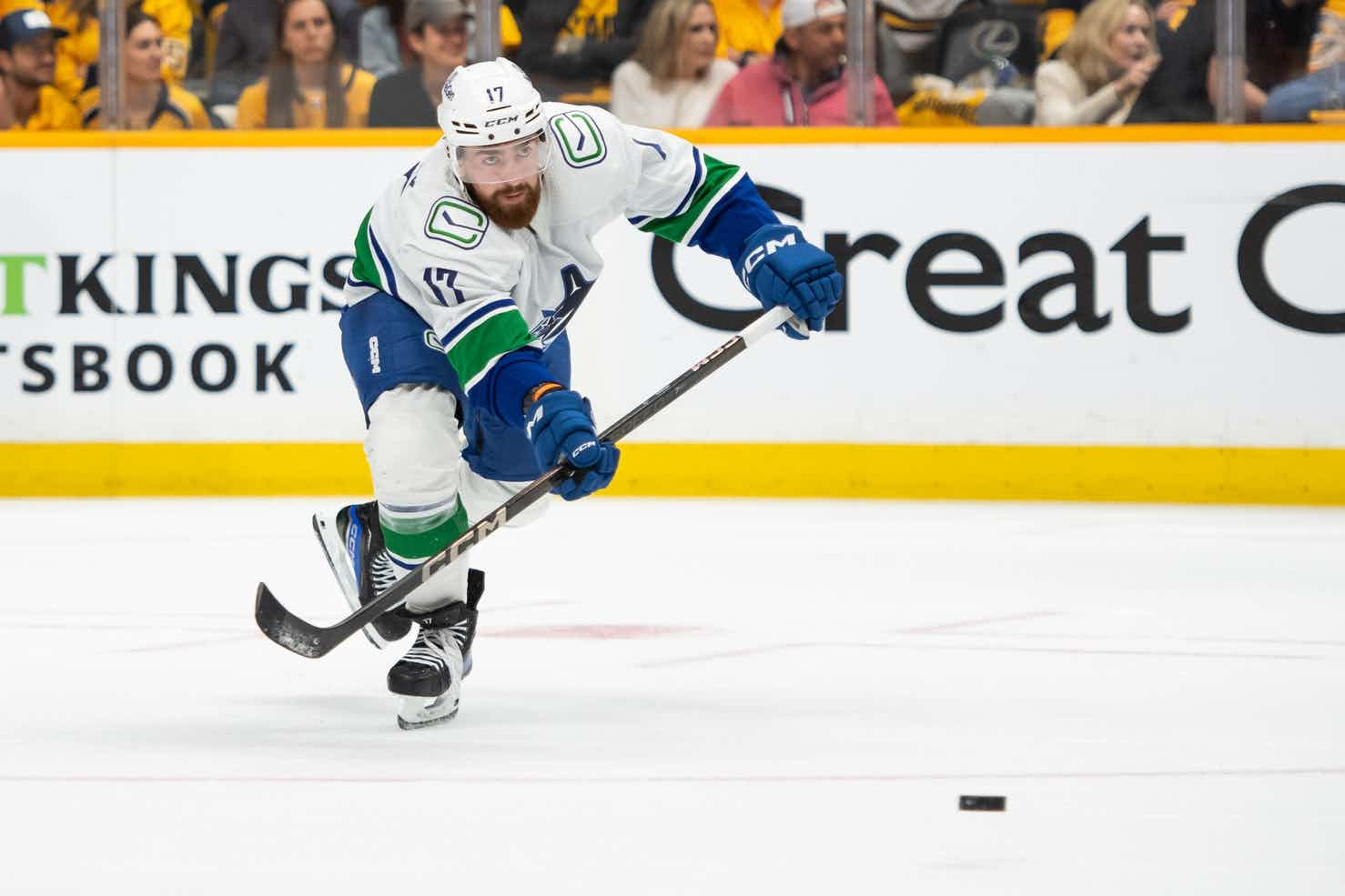Prospect Profile: #5 Nicklas Jensen

The 2013-14 season was one of immense extremes for Nicklas Jensen, whose true talent is almost assuredly somewhere smack-dab in the middle of the two polar opposites his play showed over the course of the campaign.
Generally speaking most young players tend to carry with them an “inconsistent” label as they acclimatize and work their way up the ranks. Jensen wasn’t able to elude it himself, but much of that traces back to a combination of a preseason injury and some dubiously fluctuating percentages, moreso than anything resembling a legitimately worrisome individual trend.
It seems like ages ago now, but it was this time last year when there was a steadily growing amount of buzz for Nicklas Jensen as a potentially viable candidate to not only make the Canucks out of camp, but actually fill a top-6 scoring role on a team that appeared to be in desperate need of just that.
One of those notions proved to be glaringly true; the Canucks scored the 3rd fewest number of goals as a team, with (somewhat astoundingly) just one of their players reaching the 20-goal plateau. They certainly could’ve used that type of player, but unfortunately he never really even managed to get out of the gate.
Dealing with a shoulder injury Jensen was sent down to Utica to start the season and work on rounding out his game, which wasn’t all that unreasonable a proposition given that he was still just a 20-year old with 28 professional games in North America under his belt.
It’s tough to accurately quantify just how big a role the injury he was nursing attributed to this, but Jensen’s start to the year – much like that of the rest of the Comets – was unfathomably futile. He managed just a measly 3 assists in his first 18 games of the season, only lighting the lamp himself just the one time in the first 26 games of the season to boot.
I spoke to the Utica Observer-Dispatch’s John Pitarresi about what he saw from Jensen during that time, and his sentiments proved worthy of expanding on:
“He [Jensen] stuck out like a sore thumb when he got here – he was better, faster and smoother than most at this level – but nothing happened for a long while. I’m sure the injury was a big part of it, but I wouldn’t say that it was making him “shy” or anything of the sort. It’s just that he’d be out there, looking like he was going to make something positive happen, and just ultimately didn’t for whatever reason.Suddenly, things changed. Maybe he was finally 100 percent, and he certainly appeared to be much more confident. Confidence might have been the difference as much as anything, because his talent level is pretty high. I don’t know about getting more shots. I’m looking back at the sheets, and while he had a couple of games with even or eight shots during that run, he was among the shot leaders in most games as soon as he got into the lineup. I guess he figured it out and, again, played with a great deal more confidence.”
The change he’s referring to there is the supernova stretch Jensen went through when the calendar flipped to 2014, in which he was hotter than even Hansel. From January 9th to February 22nd Jensen played in 21 games, scoring 13 times. That included an impressive hat trick in the span of under 6 minutes against the Rockford IceHogs.
The idea that a positive feedback loop of health and confidence played a role likely has some merit as an explanation for what prompted Jensen’s mid-season turnaround, but there’s an even more realistic working hypothesis to be constructed:

That handy chart is from our very own Josh Weissbock – who did an admirable job of keeping up with the happenings down in Utica all season long – and it shows that Jensen, who was firing shots on net at an elite level all year long, finally earned himself some inevitable good fortune at a certain point. When they started to find their way to the back of the net, they did so in droves. It’s funny how something like that can change the perception of a player.
Taking those findings a step further, it’s worth noting that Jensen’s IPP (Individual Point Percentage) of 0.48 was lower than that of every regular Comets forward except for Alex Mallet. I’d wager that it should both see a natural uptick next season and account for the meager 6 assists in 54 games Jensen mustered down in Utica (which seems almost impossible to do for a player as talented and heavily relied upon as he was).
While it reeks of lazy analysis to use that figure as some sort of indictment against a supposed lack of playmaking abilities, it’s abundantly clear that the most prominent weapon in Jensen’s arsenal remains his shot. Corey Pronman described it as “high-end” last summer, and we saw glimpses of it during his cameo with the Canucks at the end of the season:
Truth be told, there ultimately isn’t all that much to glean from Jensen’s 17 games up with the Canucks to end the year. He drew rave reviews initially, before predictably hitting a dry spell. There are positives to be drawn from the fact that he didn’t look out of place playing against men at the NHL level, even providing fans with some bursts of rare excitement in an otherwise uniformly miserable stretch. But at the same time, starting 66% of his shifts in the offensive zone while being attached to Henrik Sedin’s hip for a large chunk of them certainly didn’t hurt his outlook.
Regardless, at the moment Jensen appears primed to head back down to Utica – this time with a brigade of far more talented peers – to start the season given the muddied clutter of other options up front, which Willie Desjardins will be tasked with sorting in the coming weeks.
That’s unless he’s able to stand out in camp with another year of experience to his name now, forcing the coach’s hand. A premise hardly out of the question given the offensive tools he boasts and the deficiencies the Canucks could once again conceivably face heading into 2014-15. Try, try again.
OTHER PROFILES IN THIS SERIES:
Recent articles from Dimitri Filipovic





